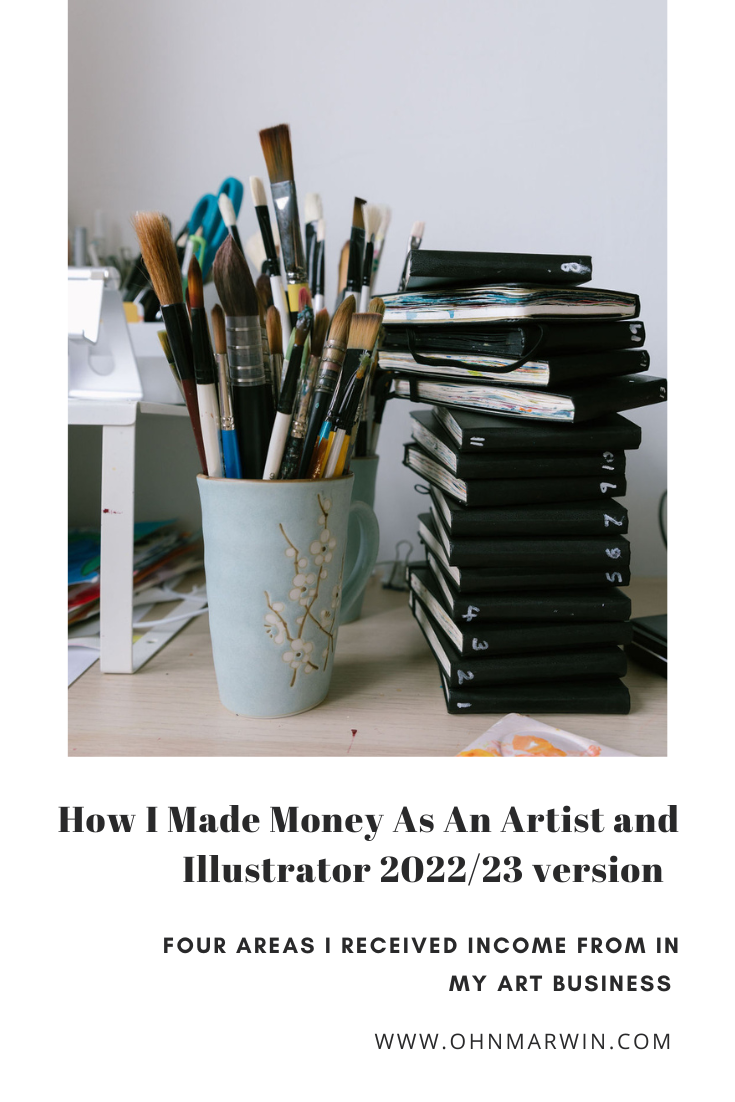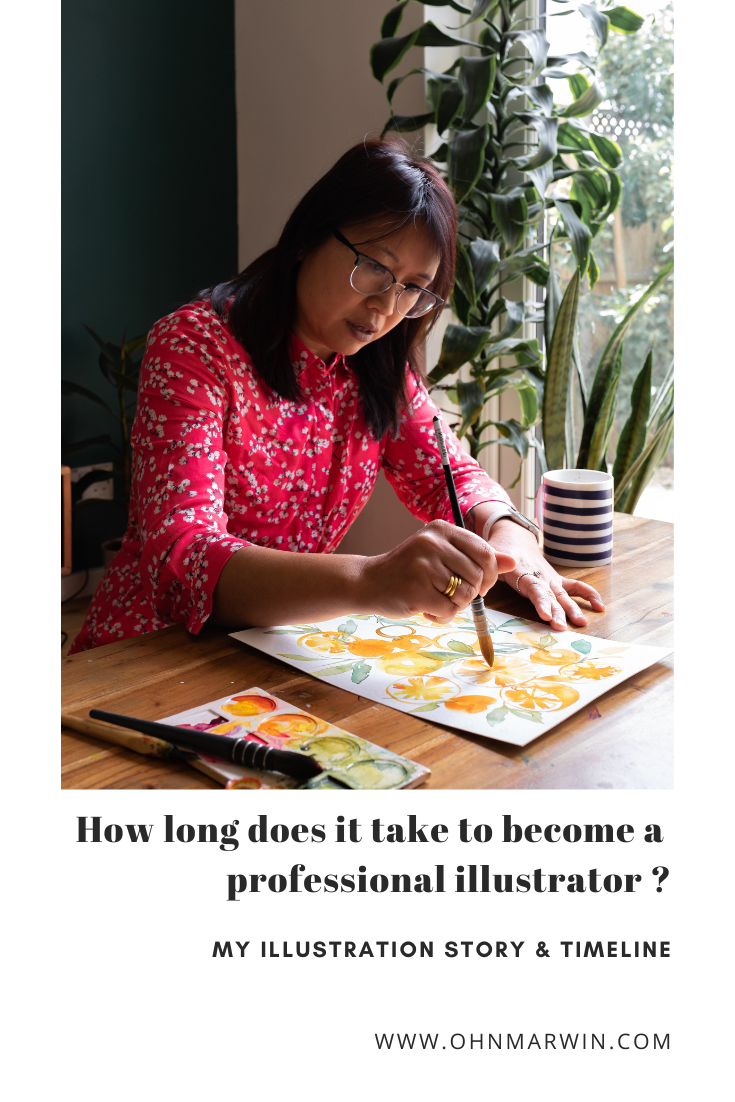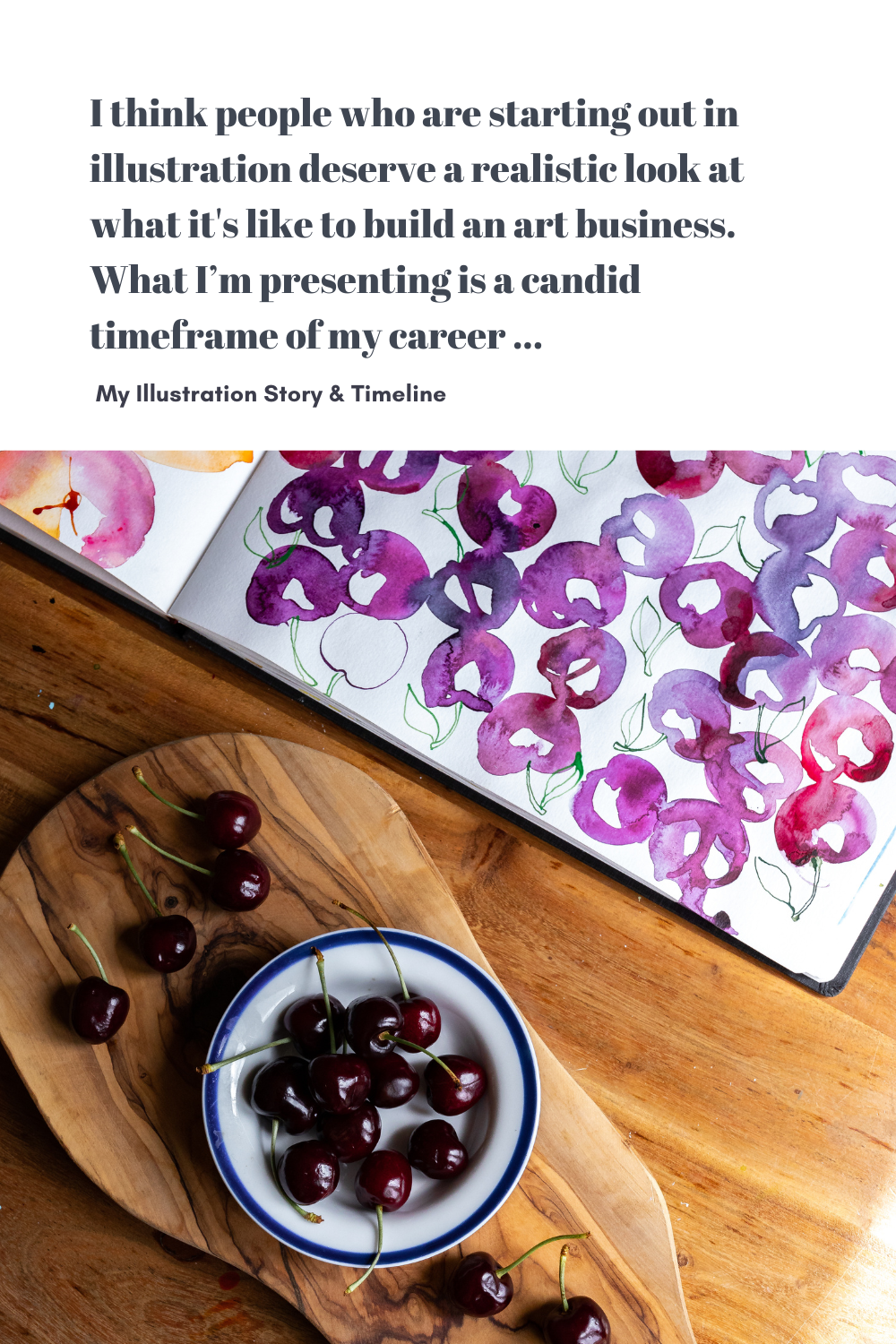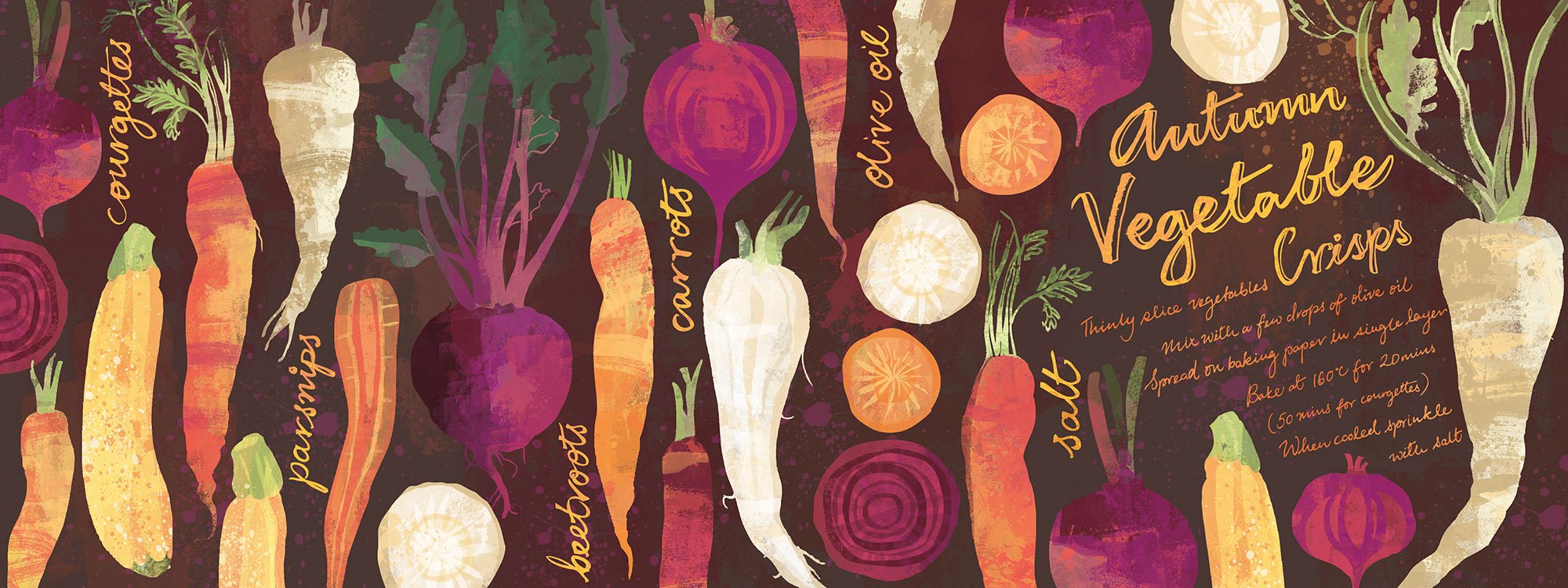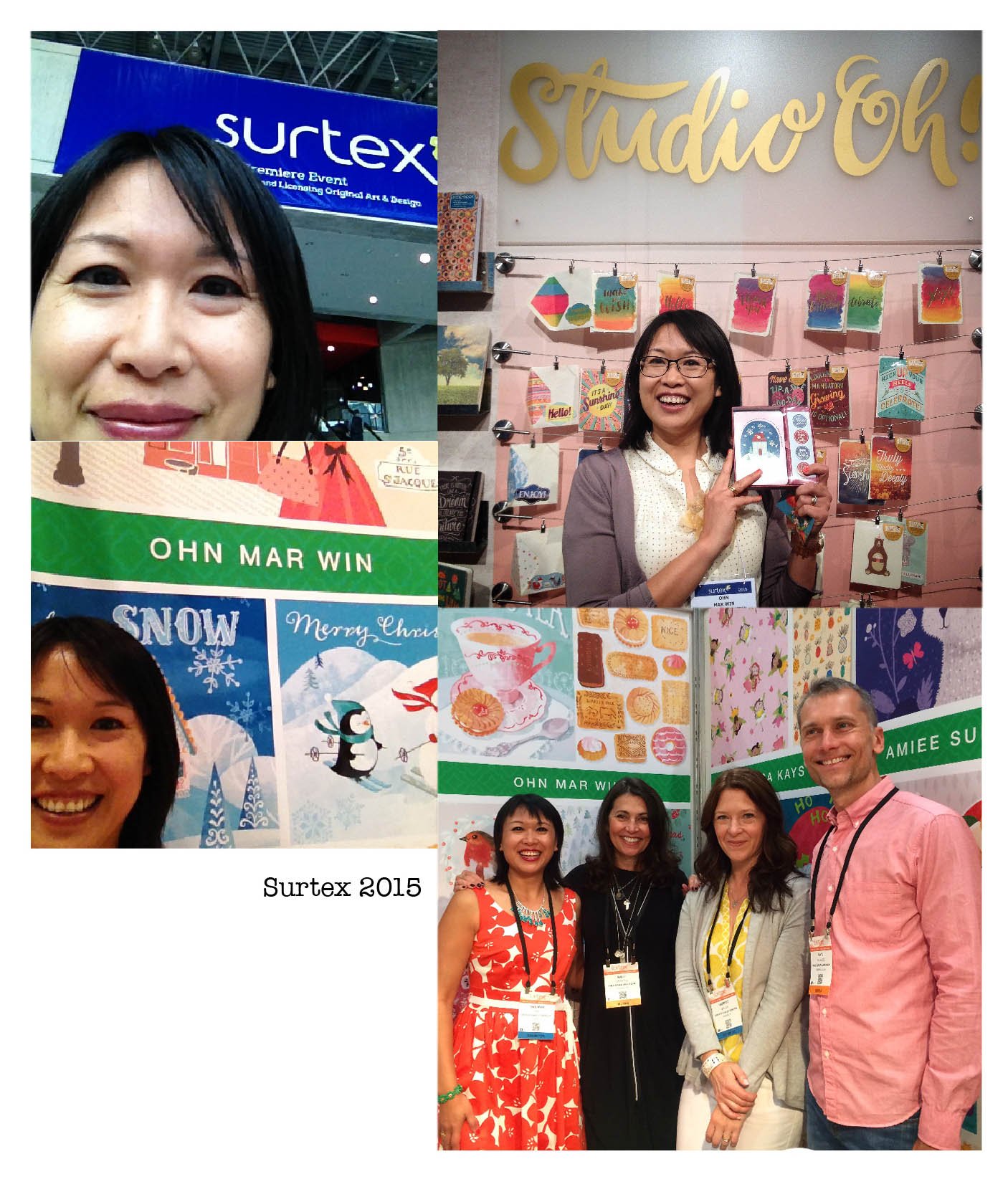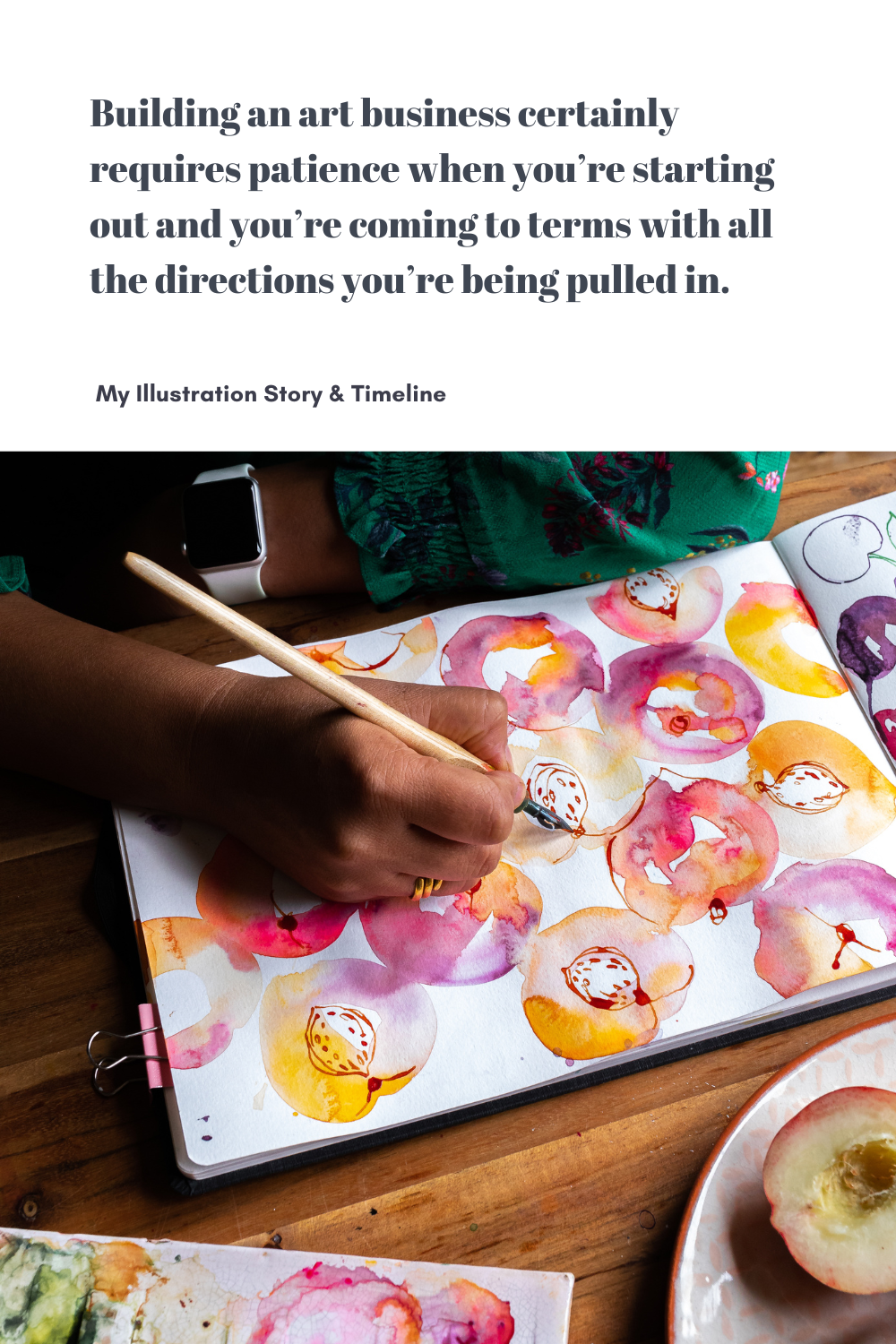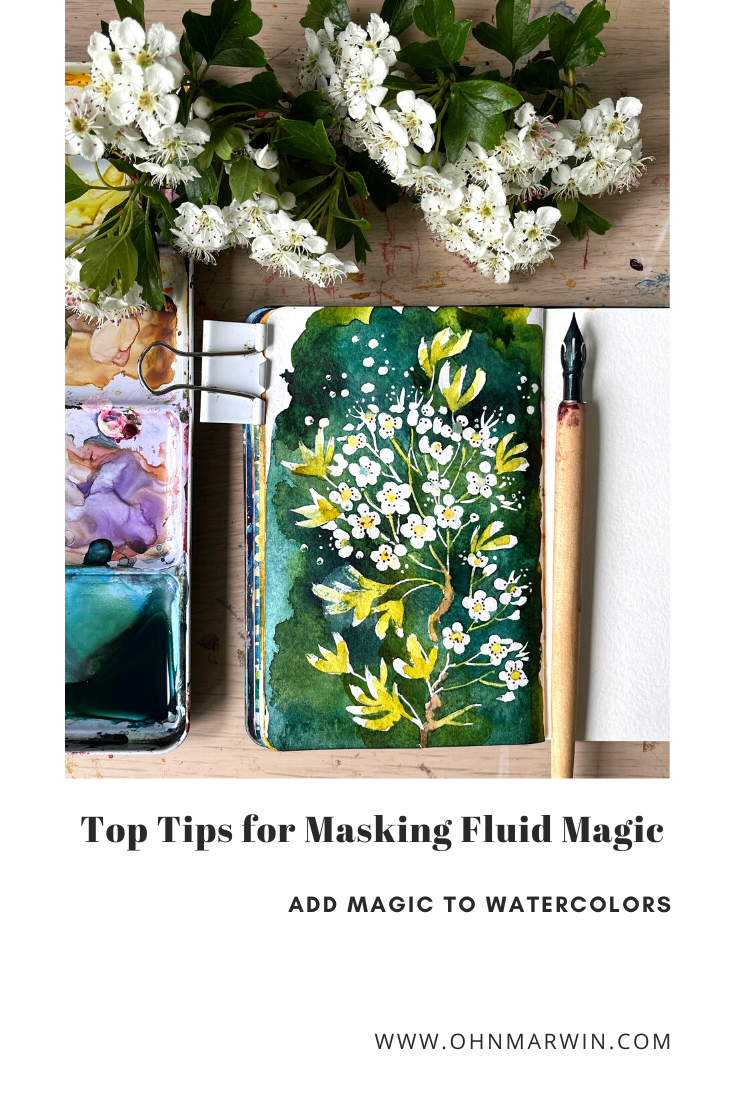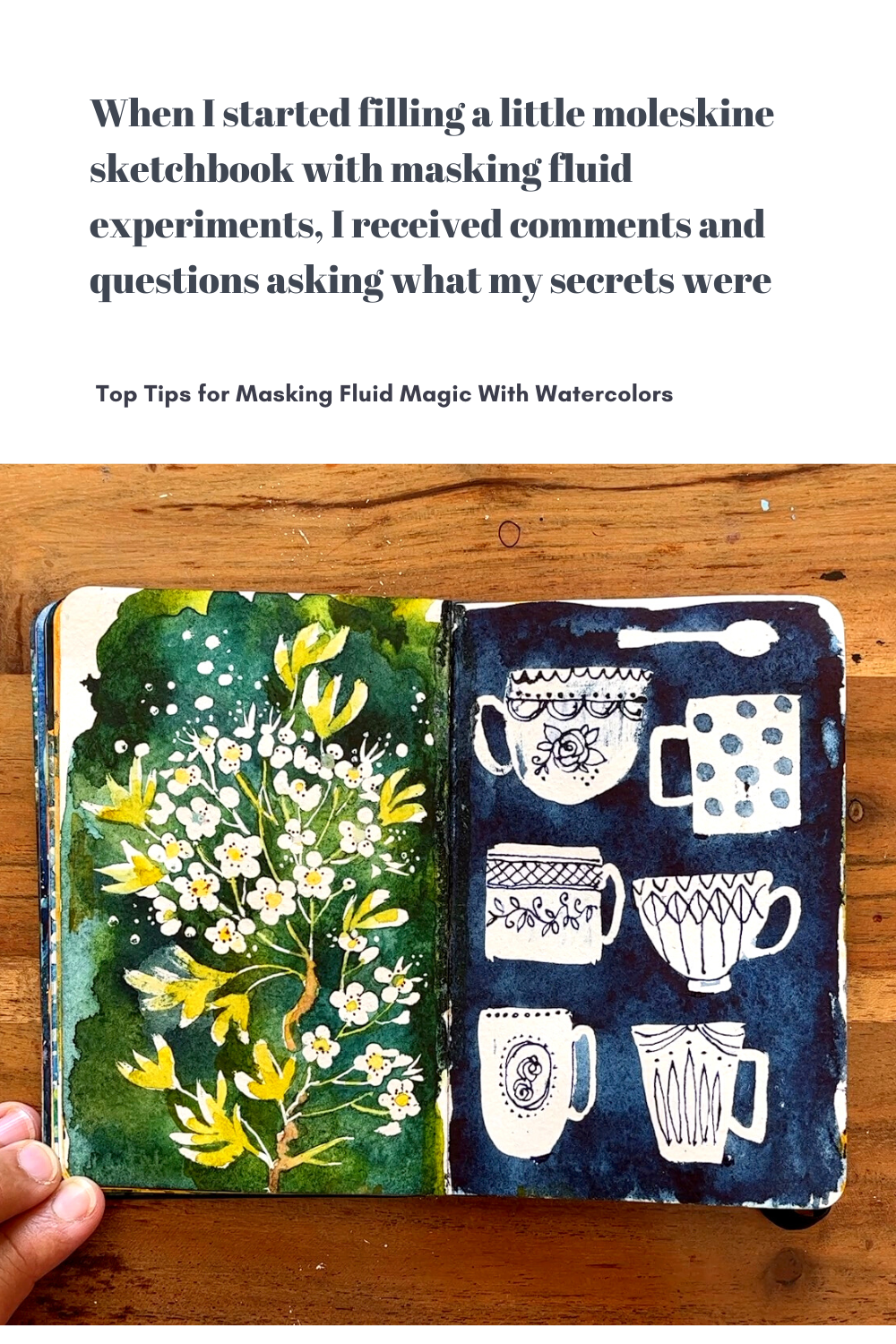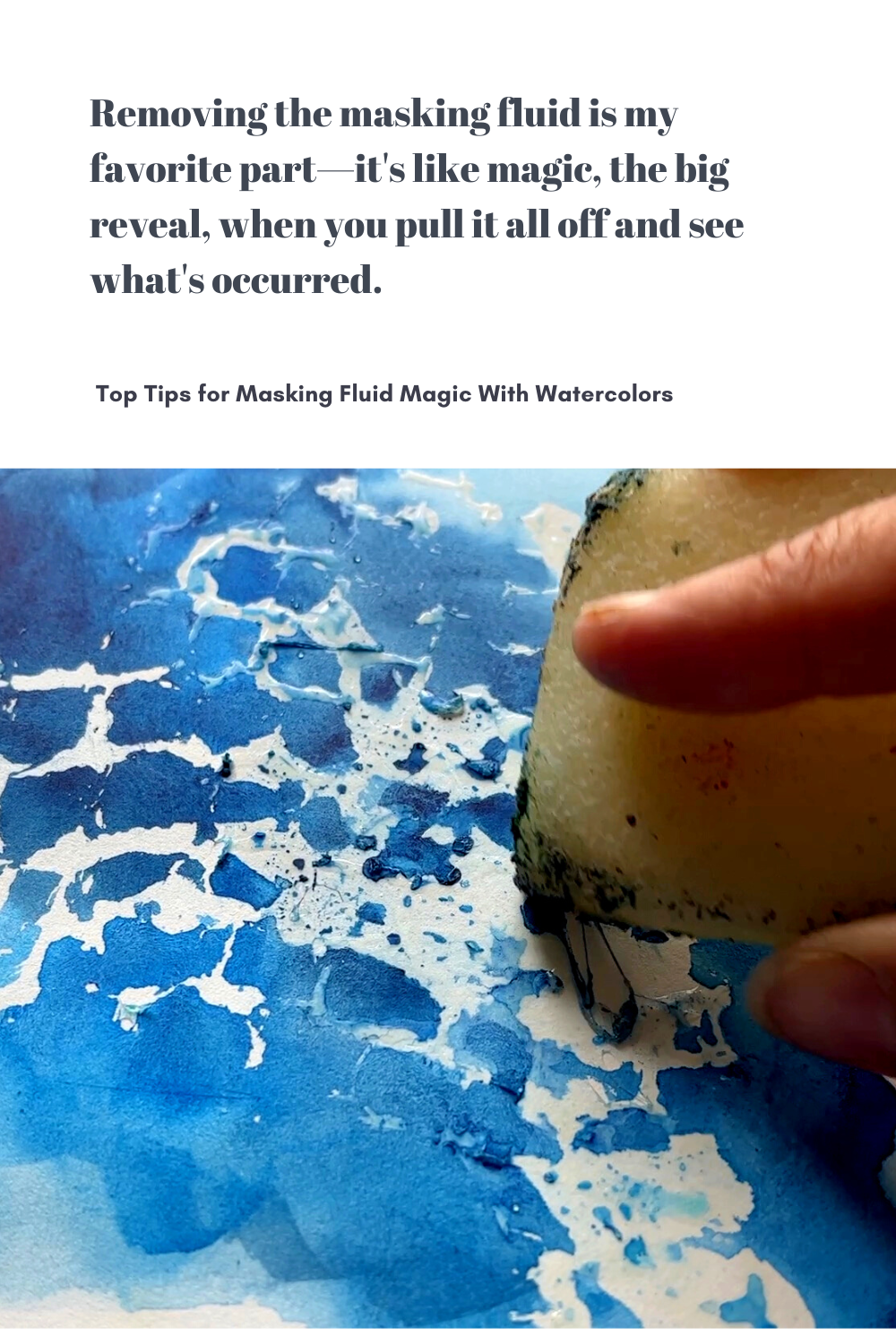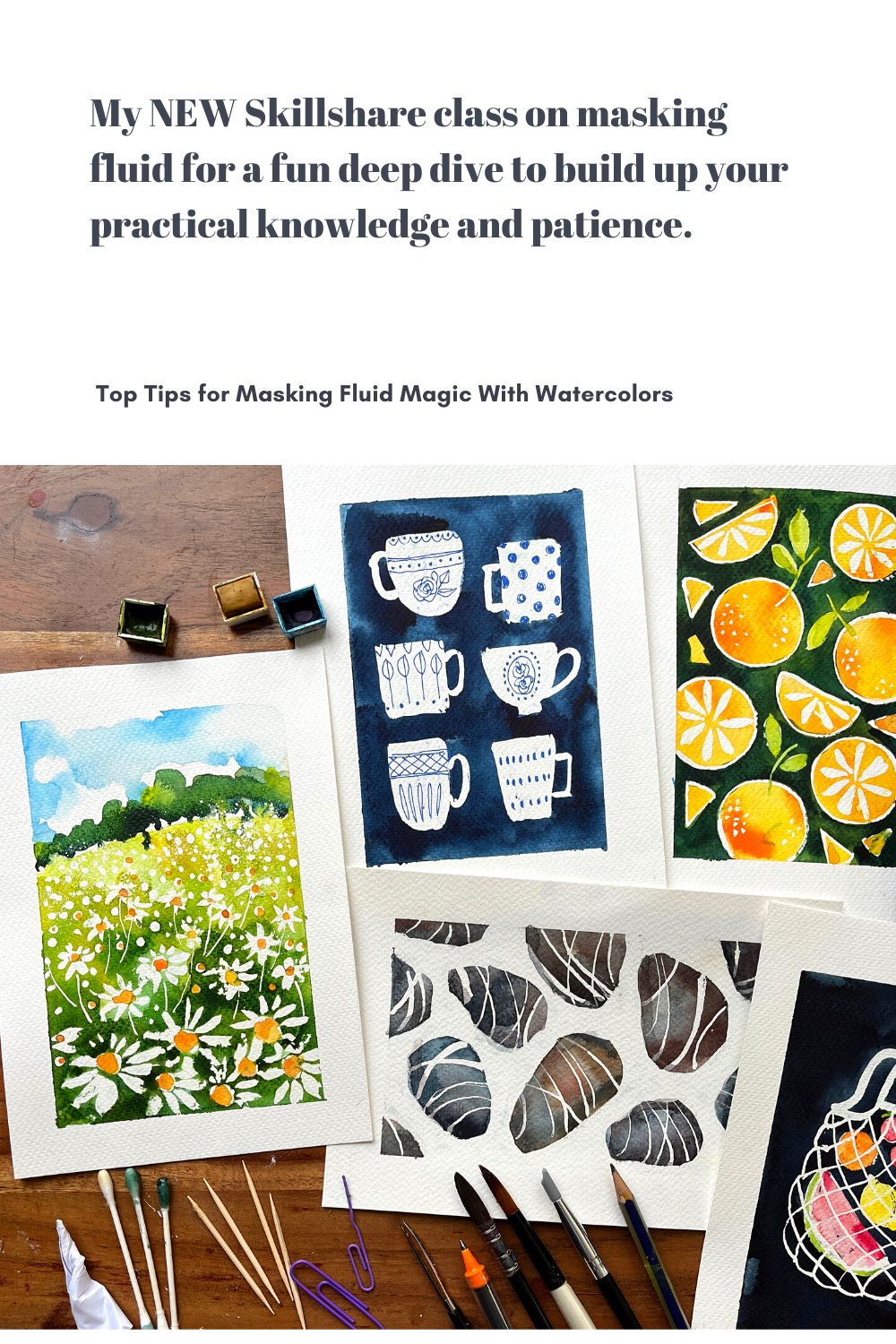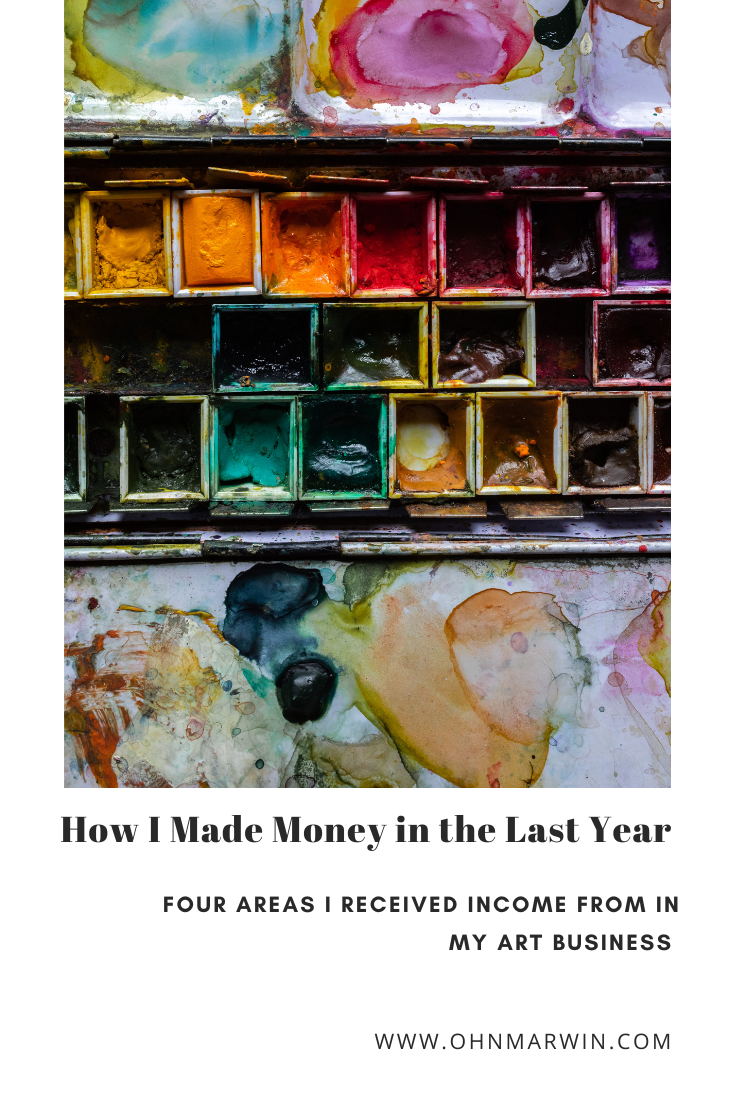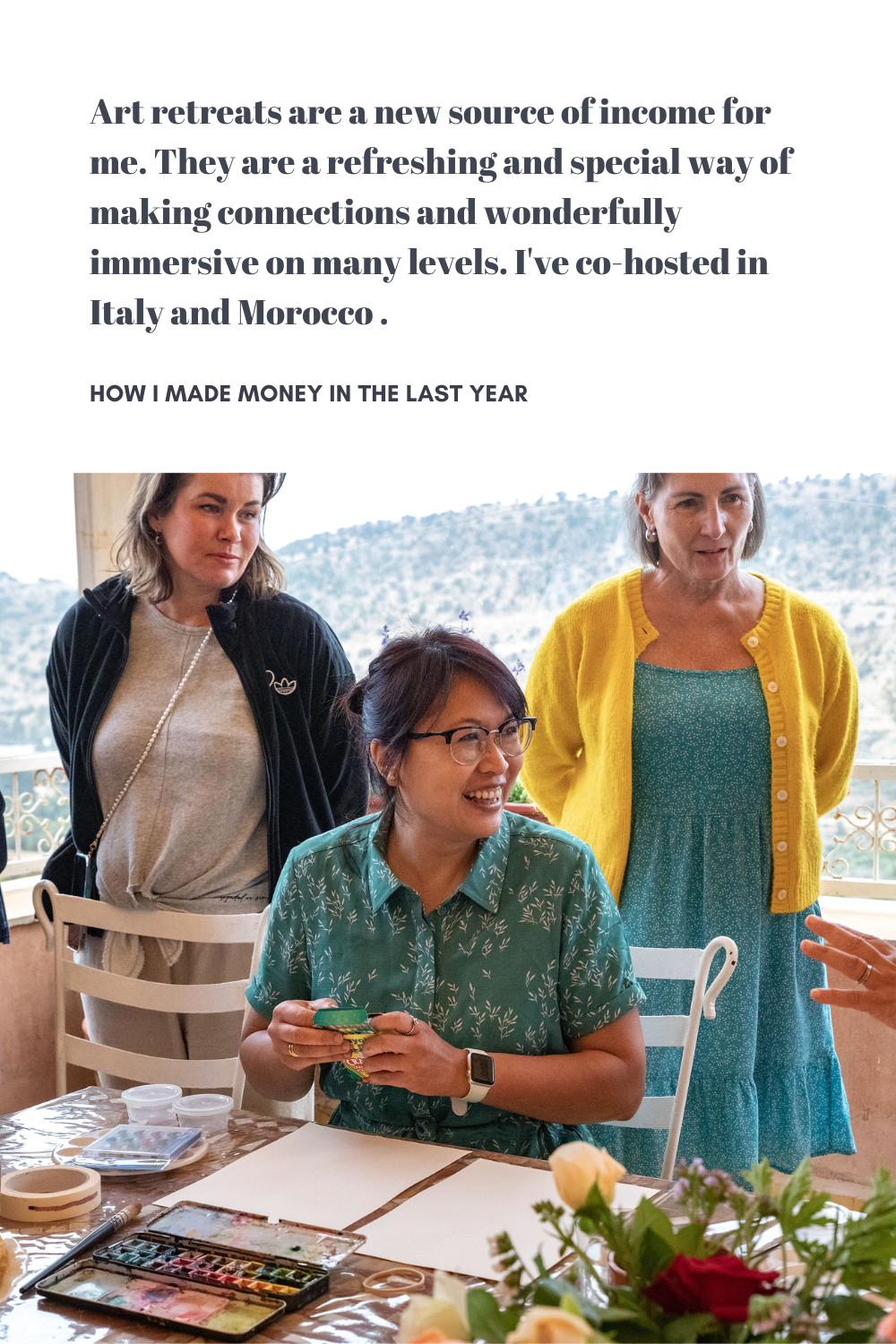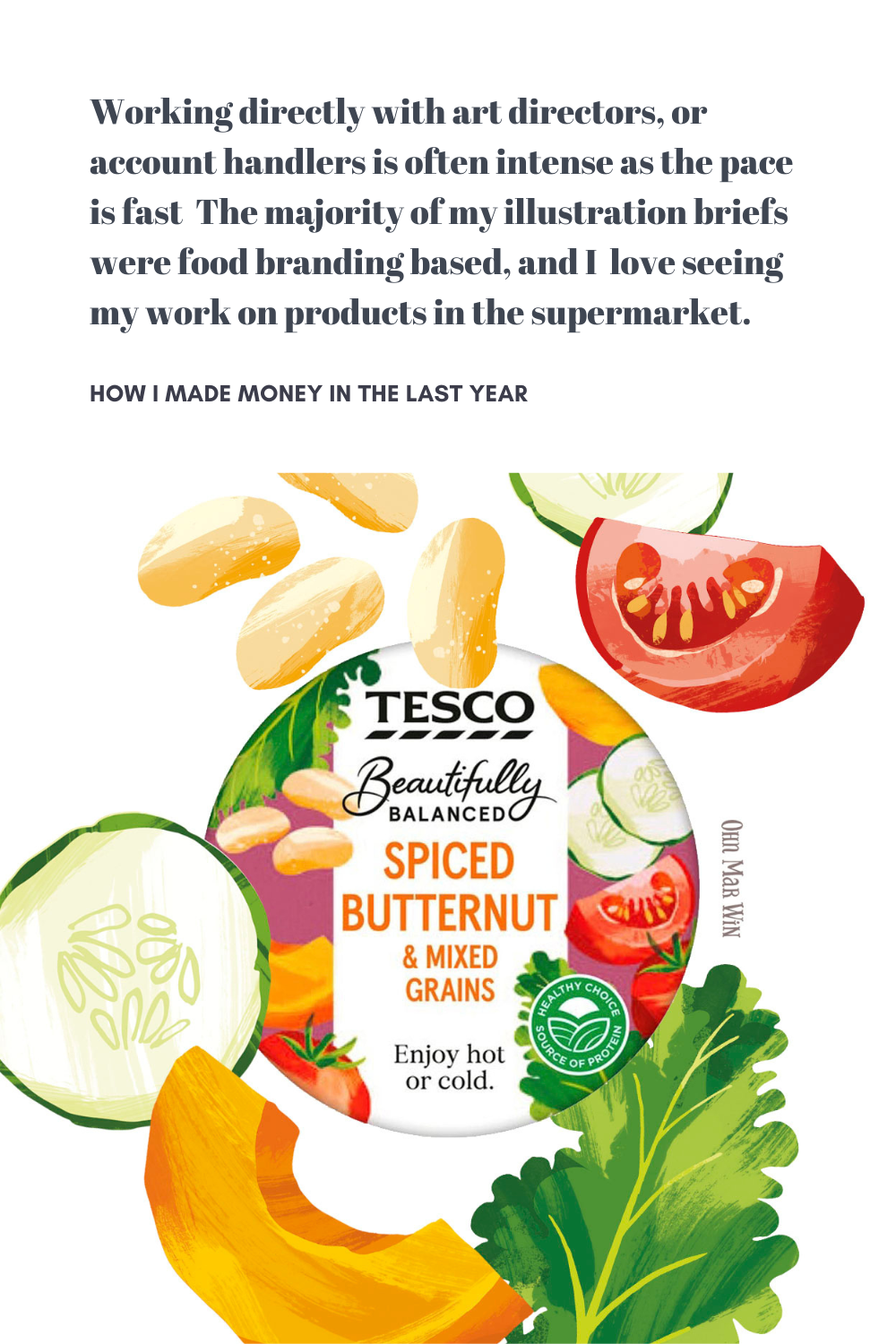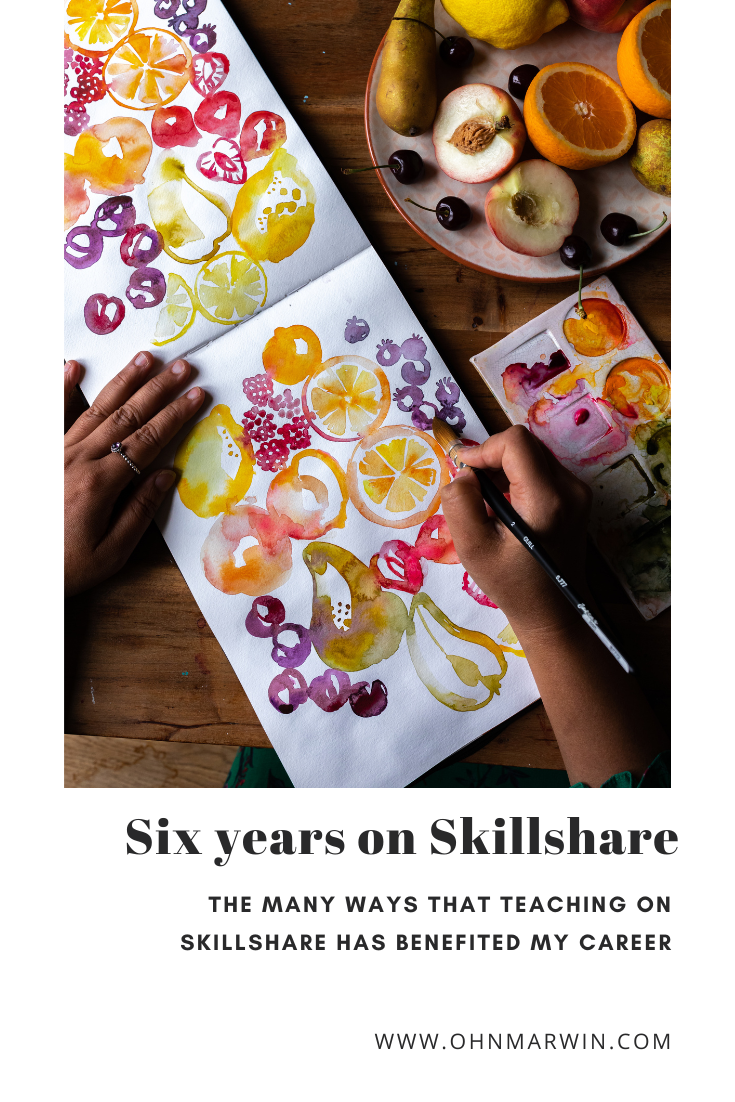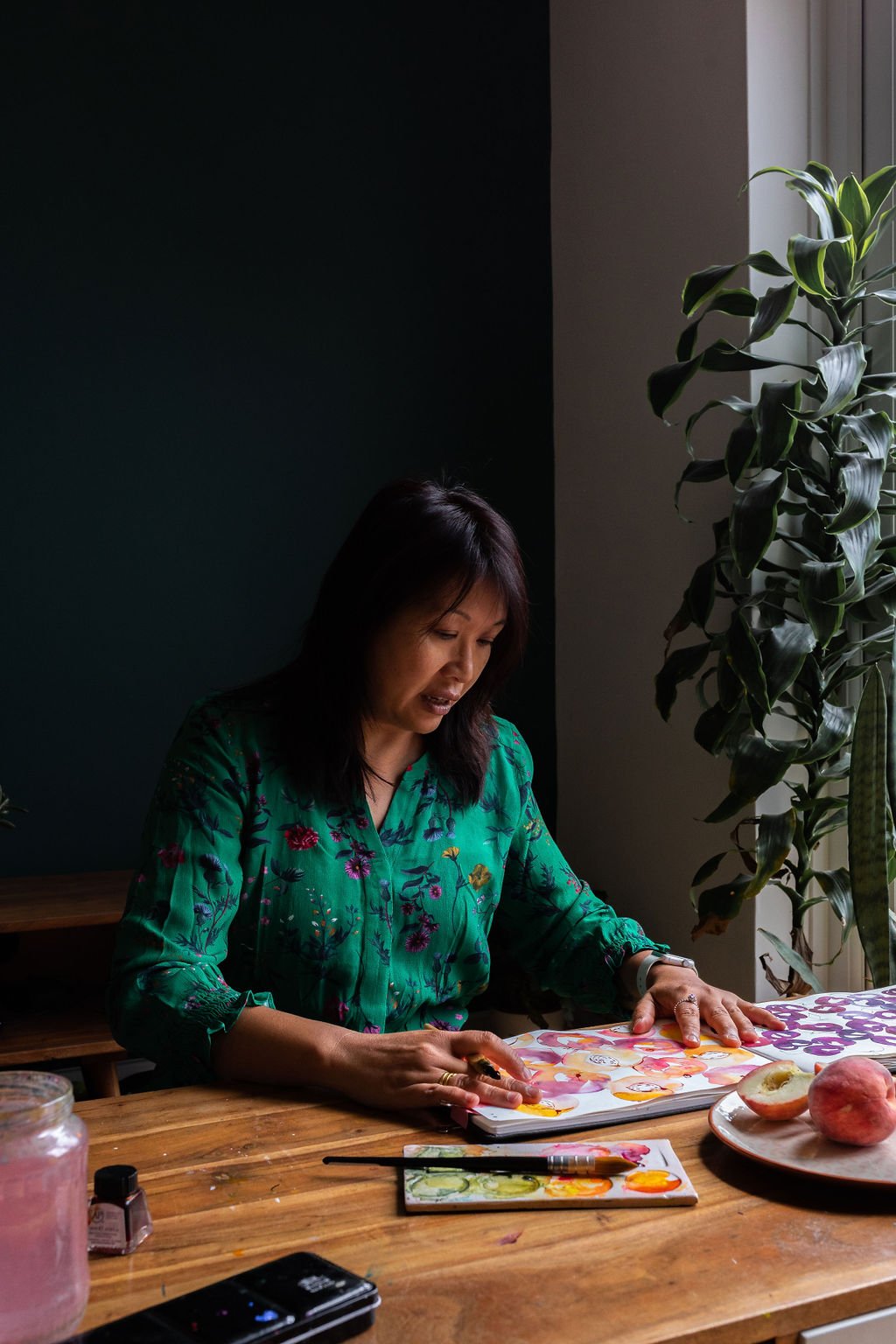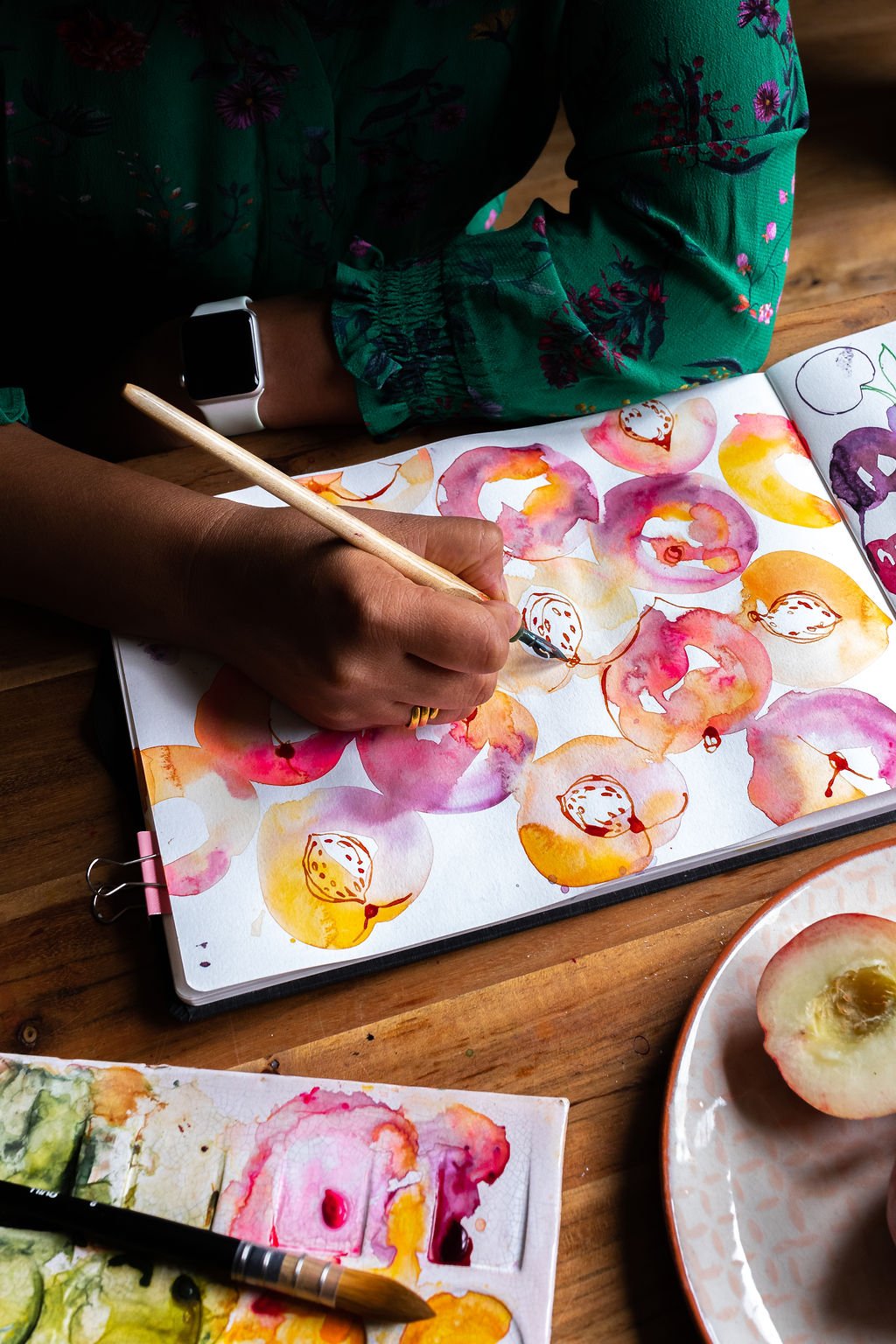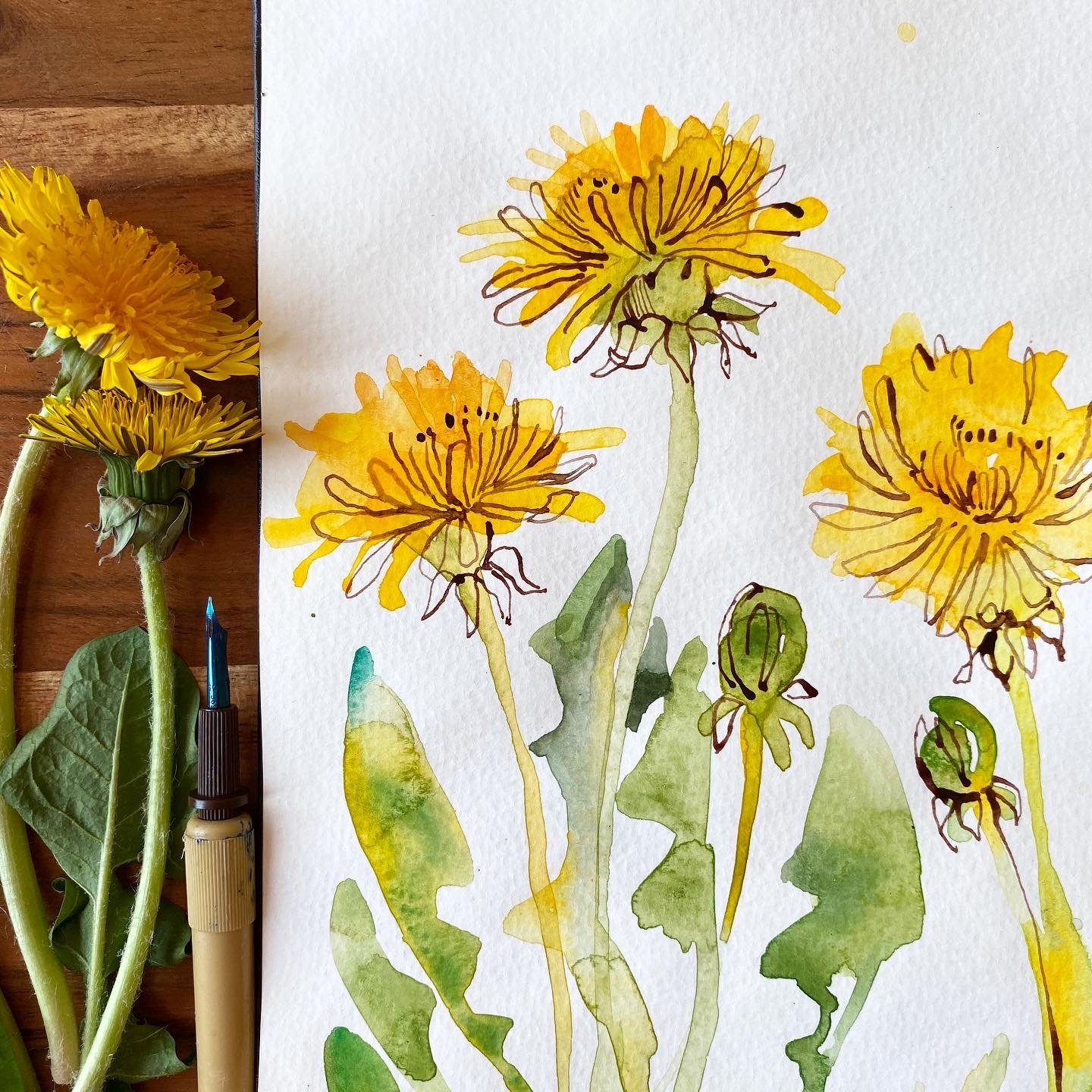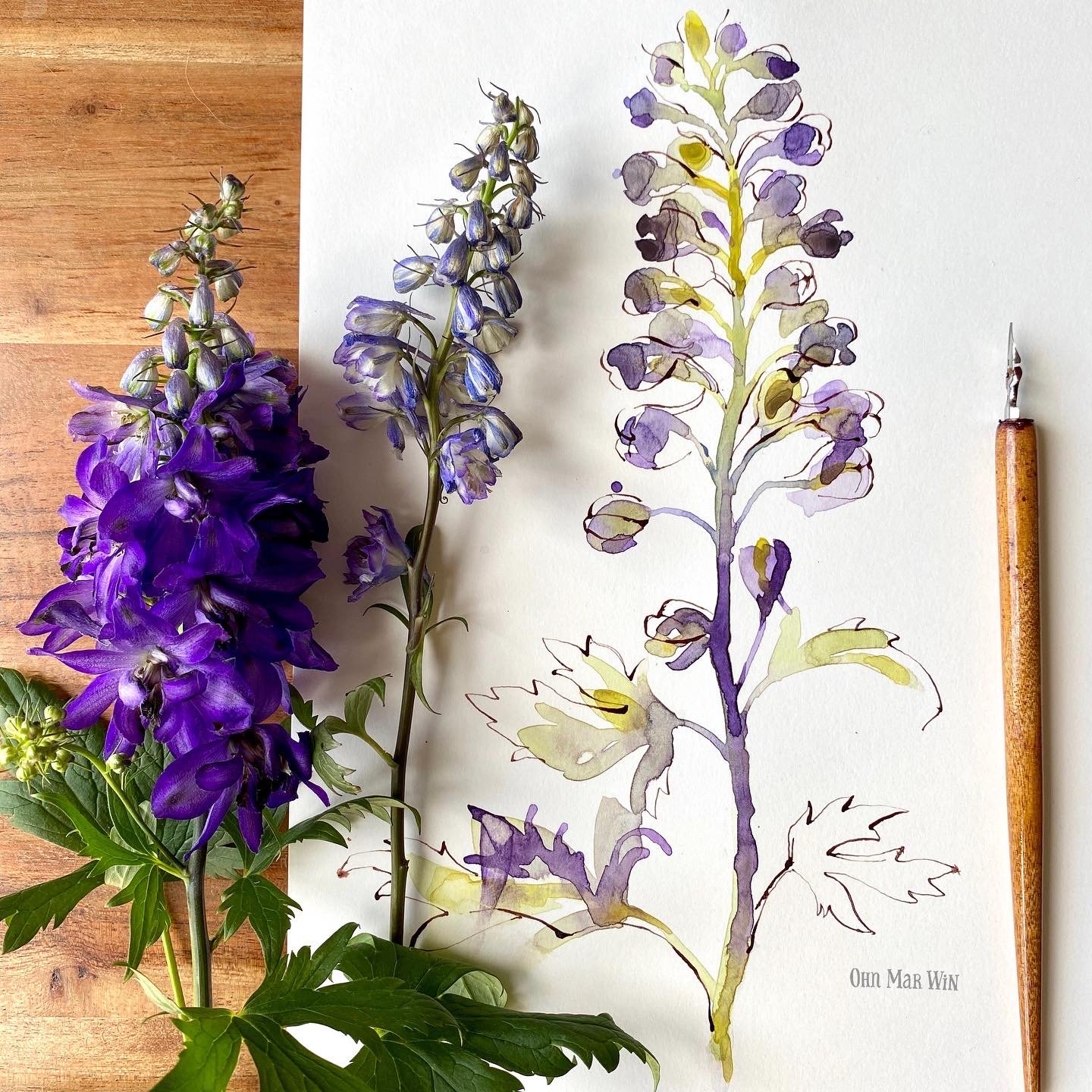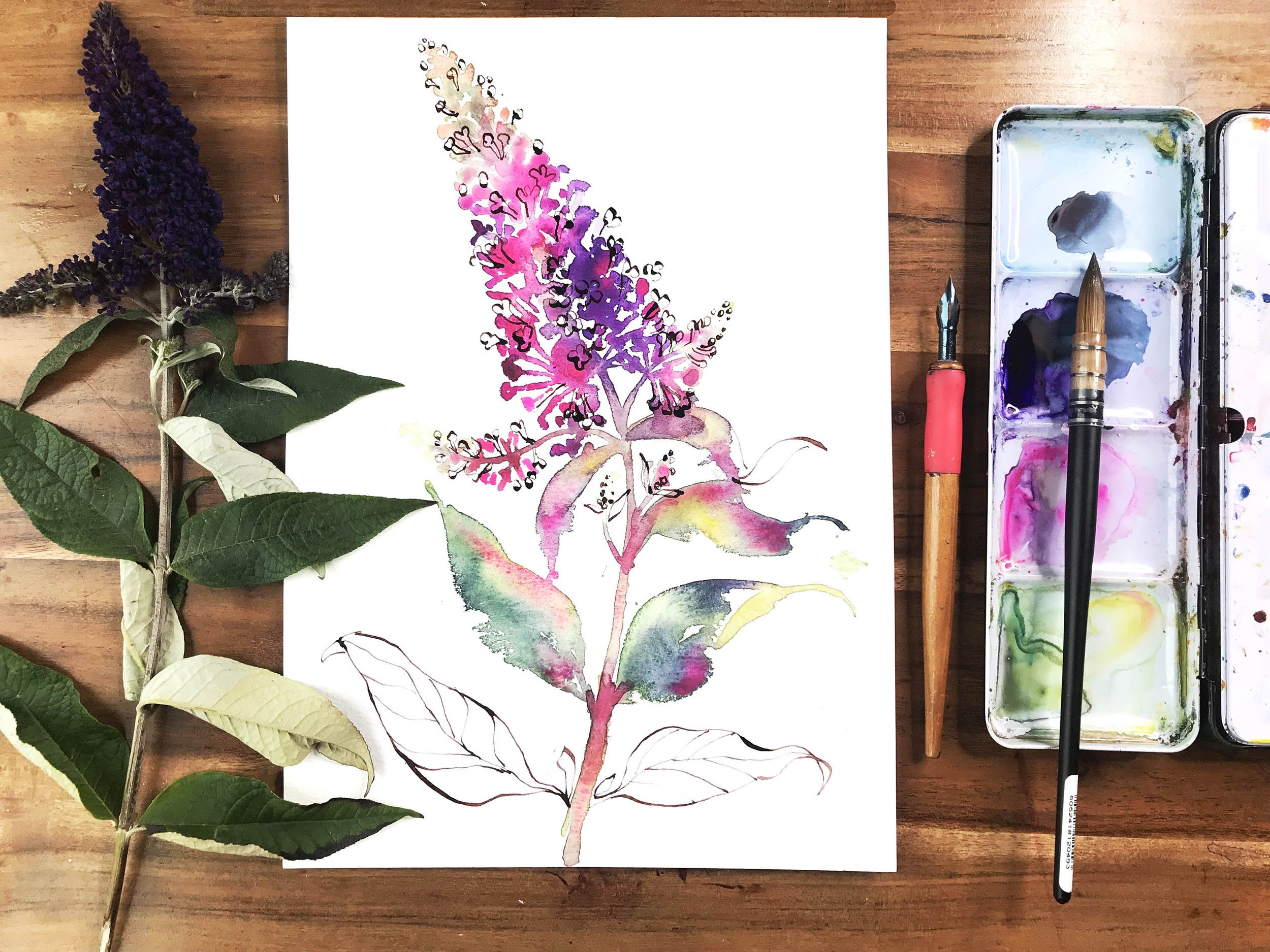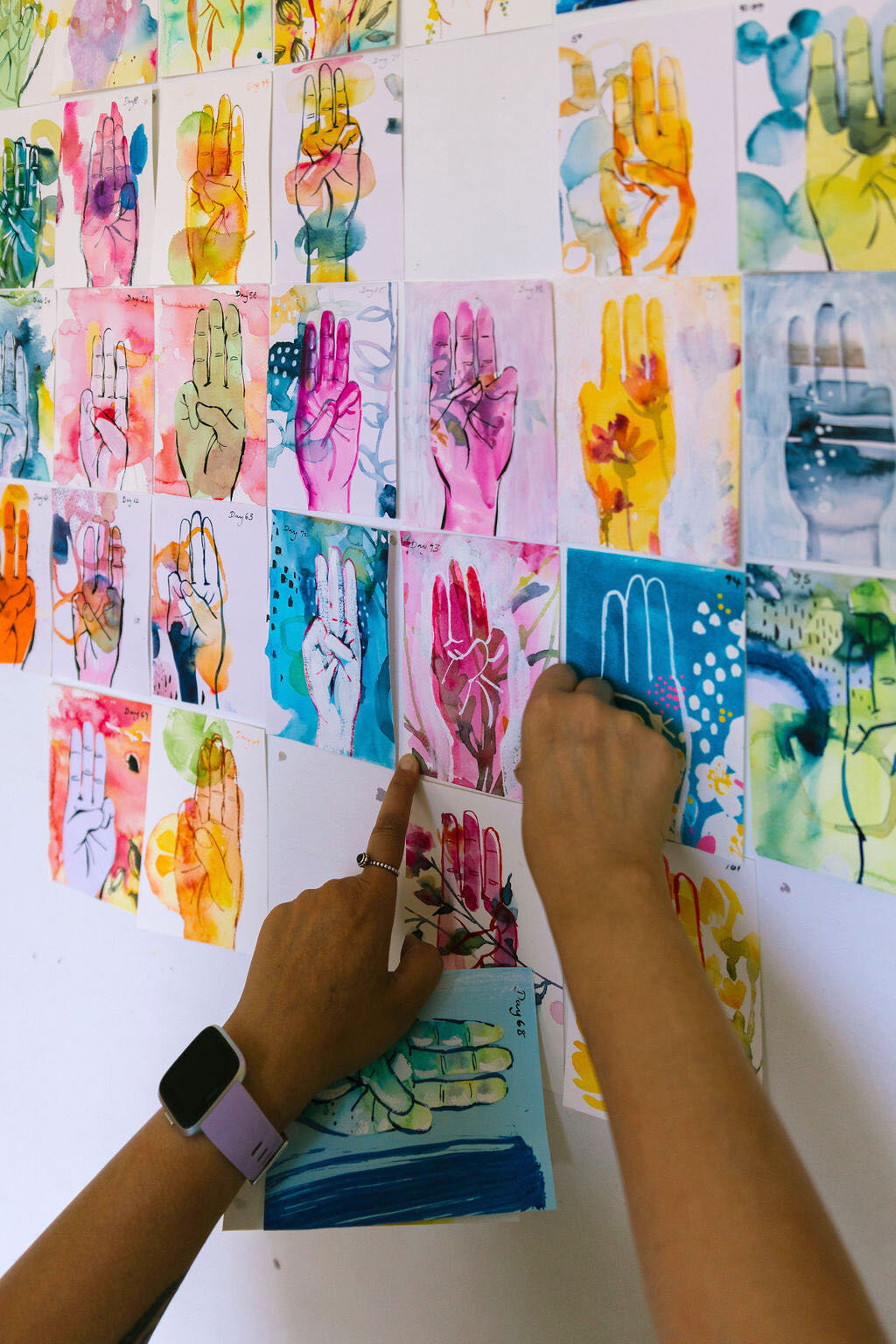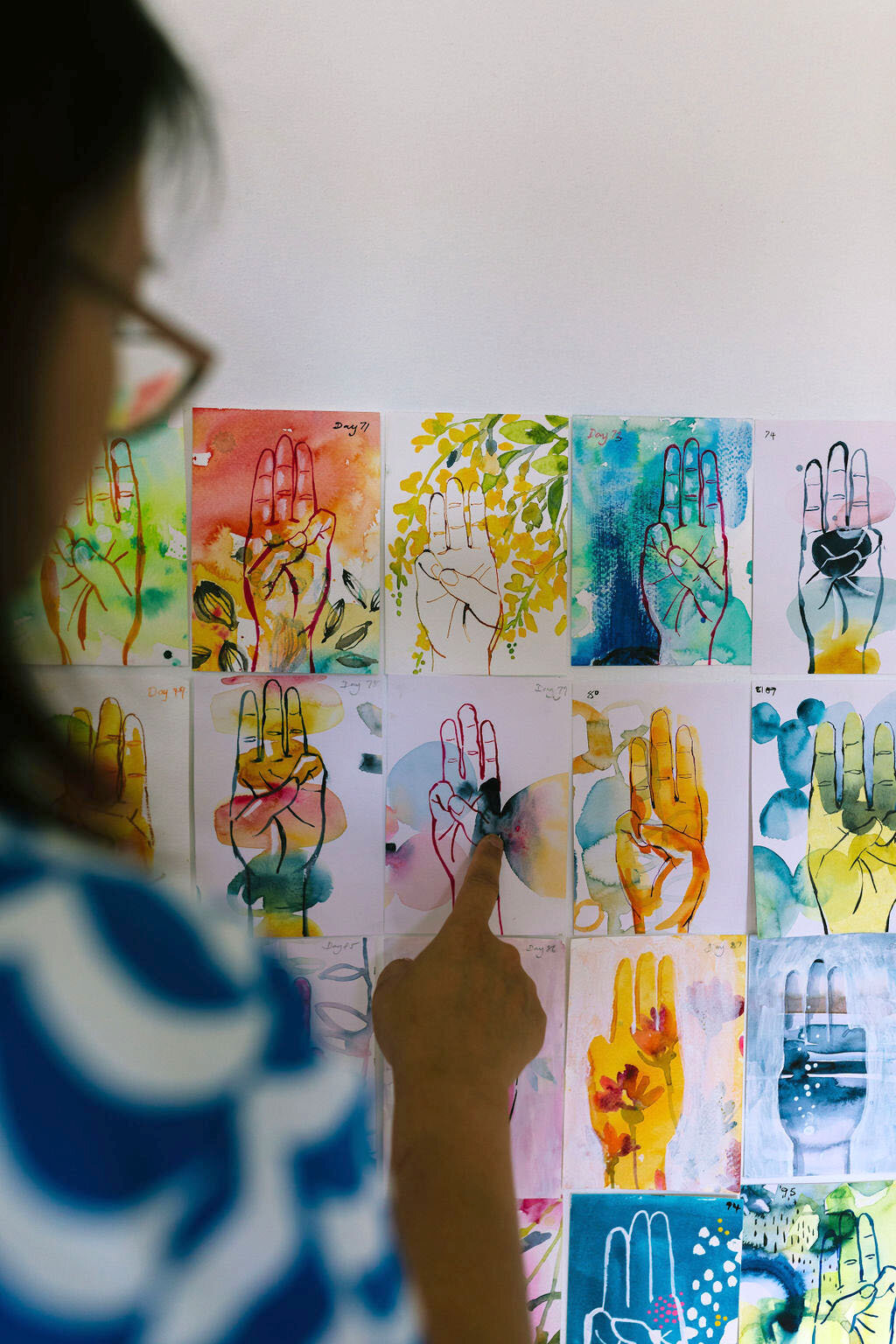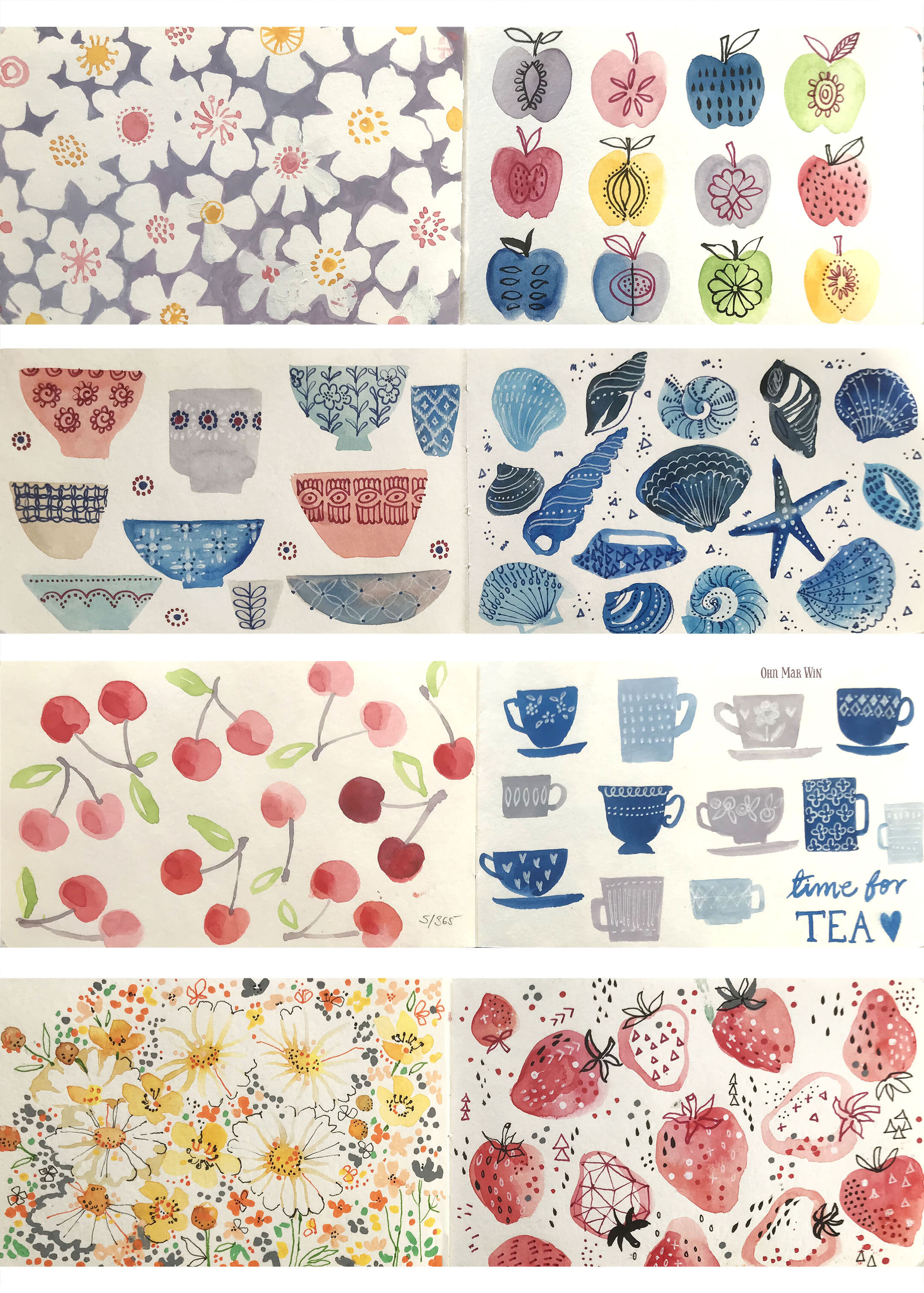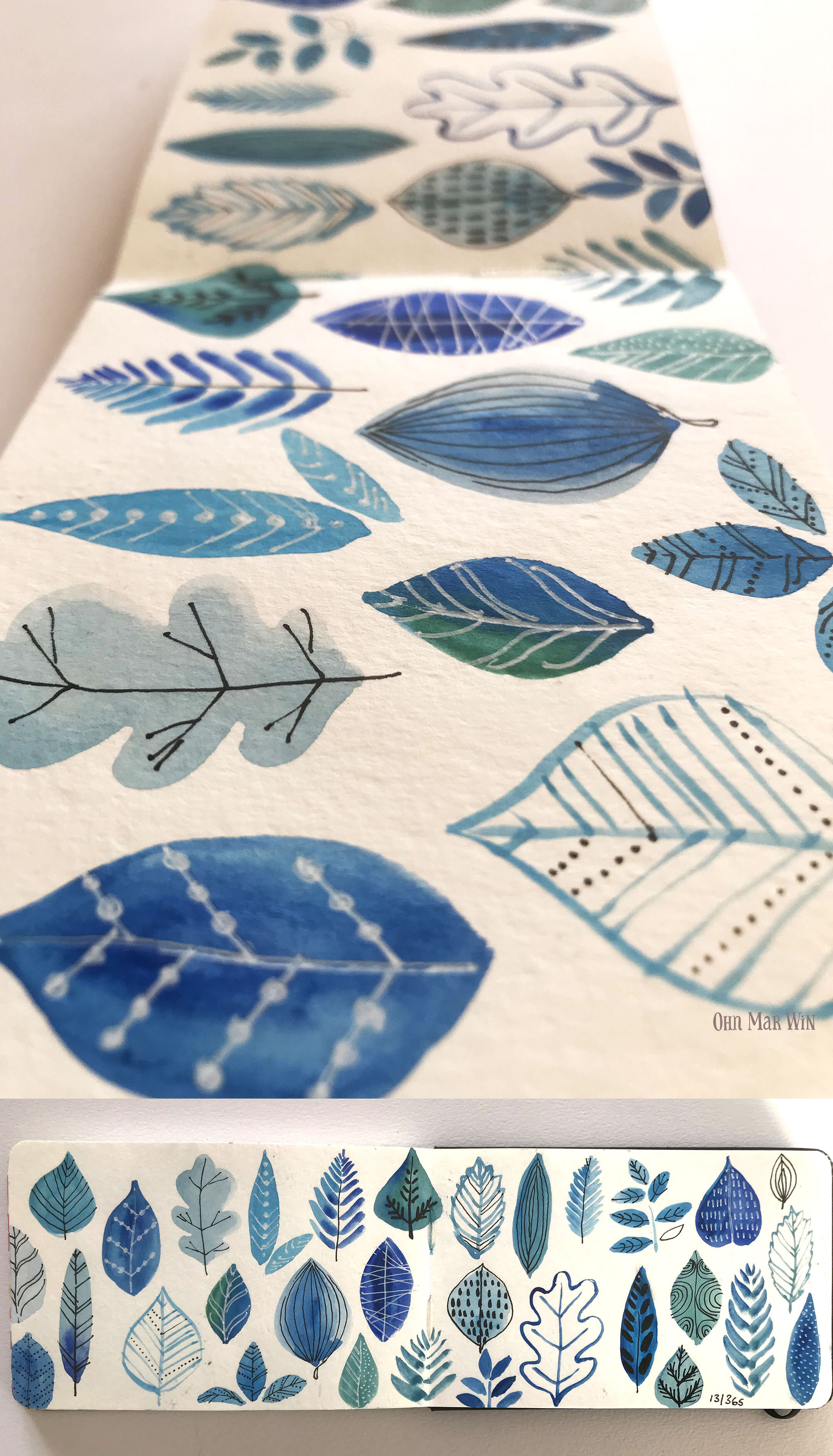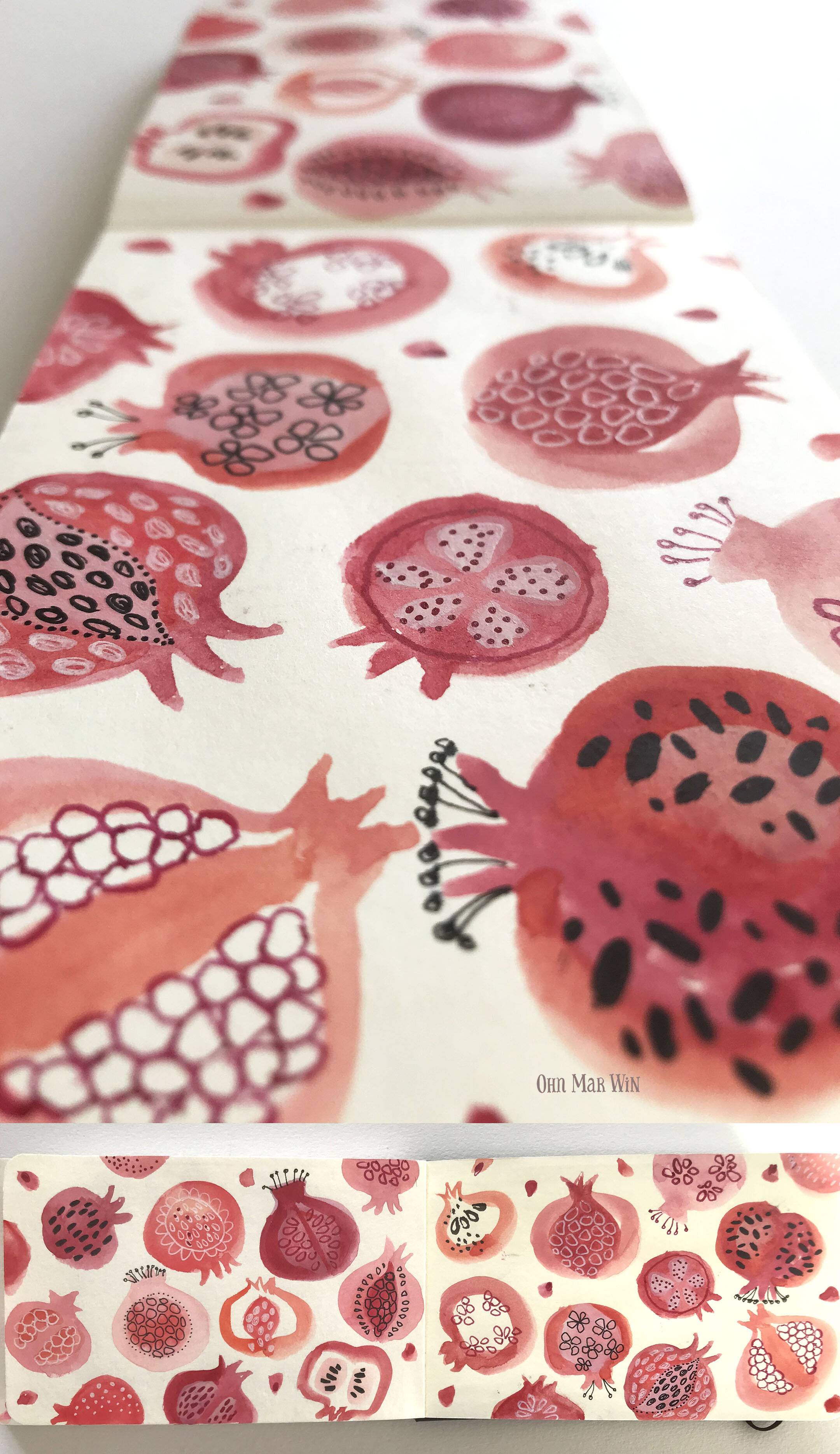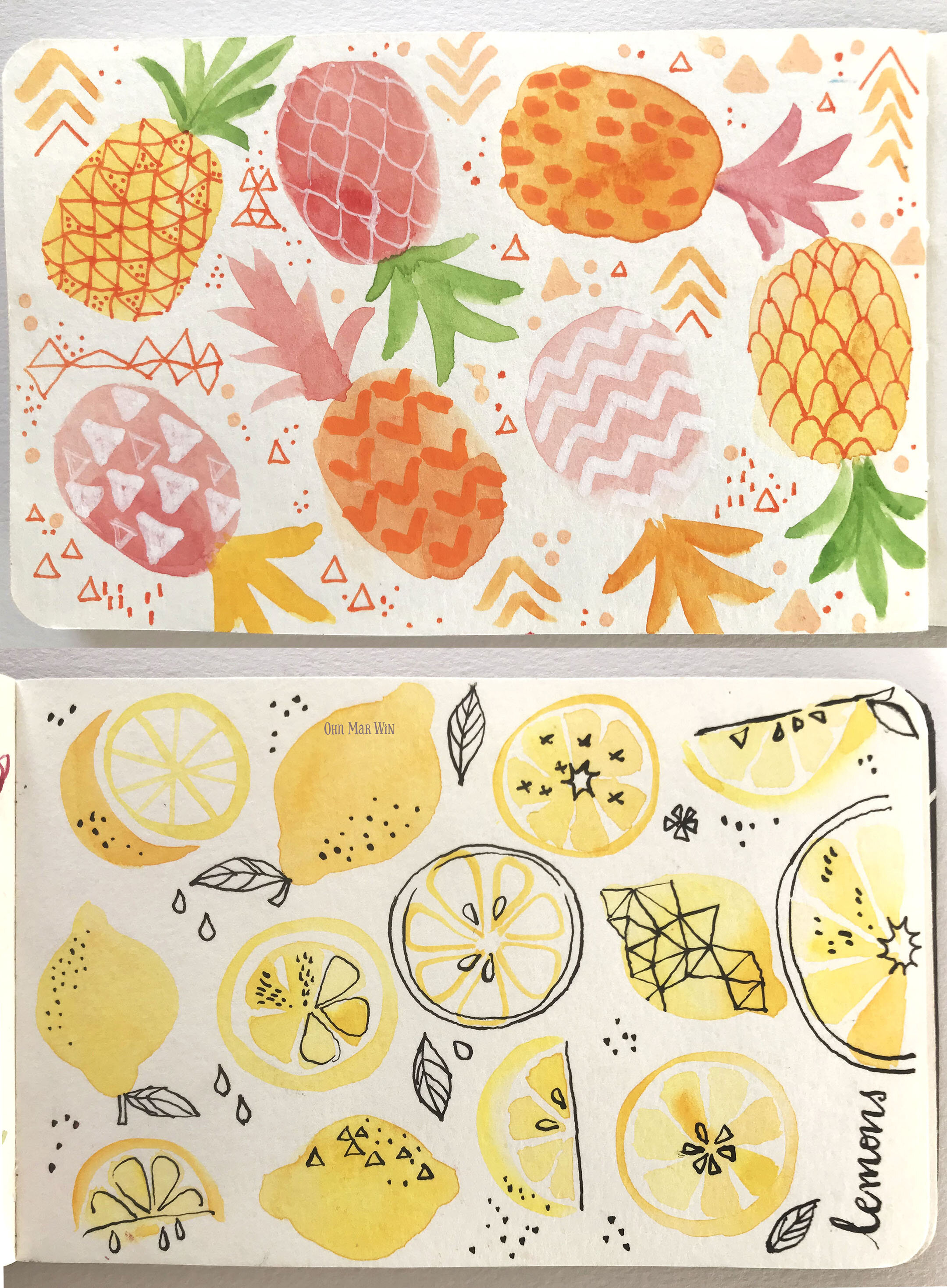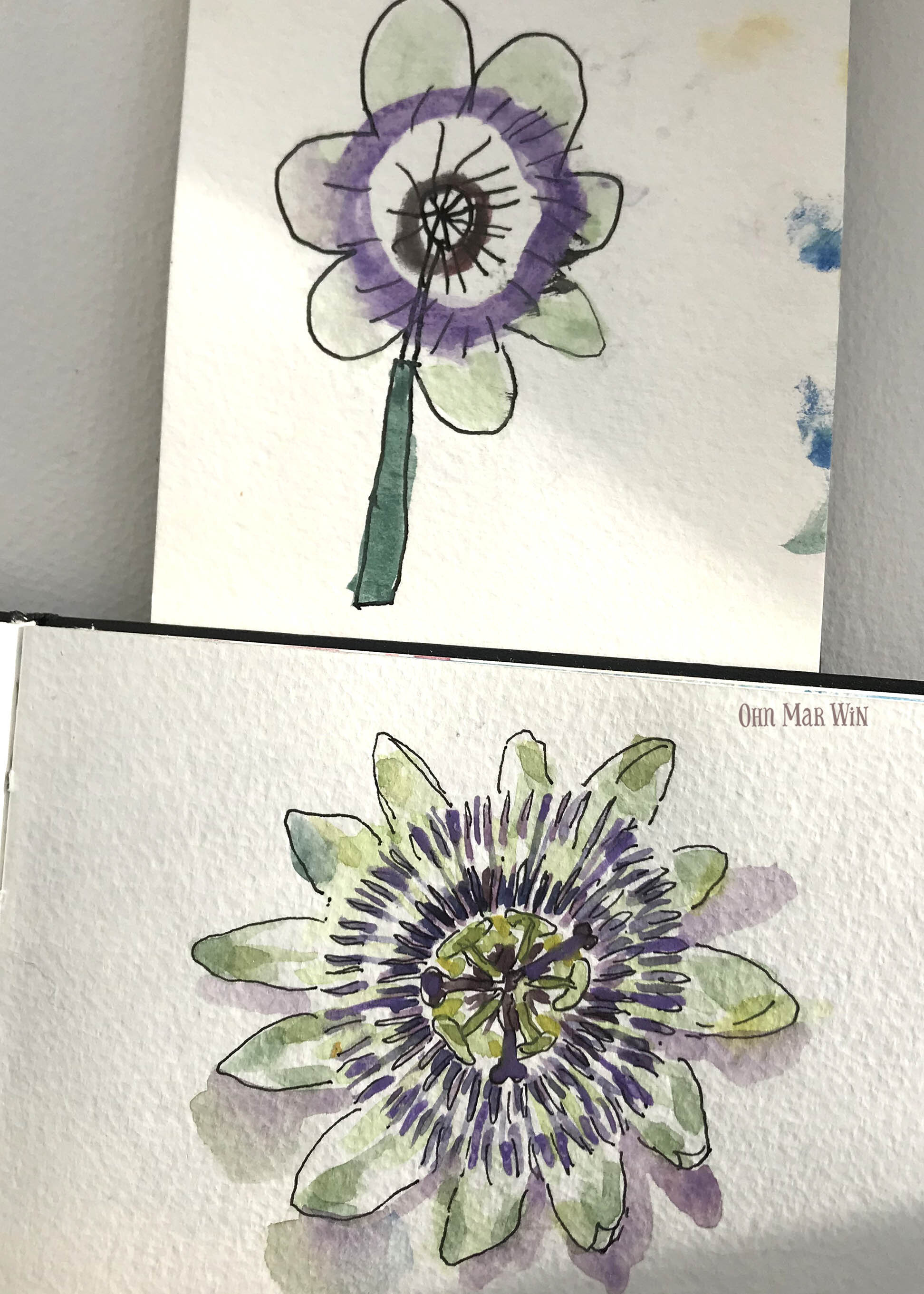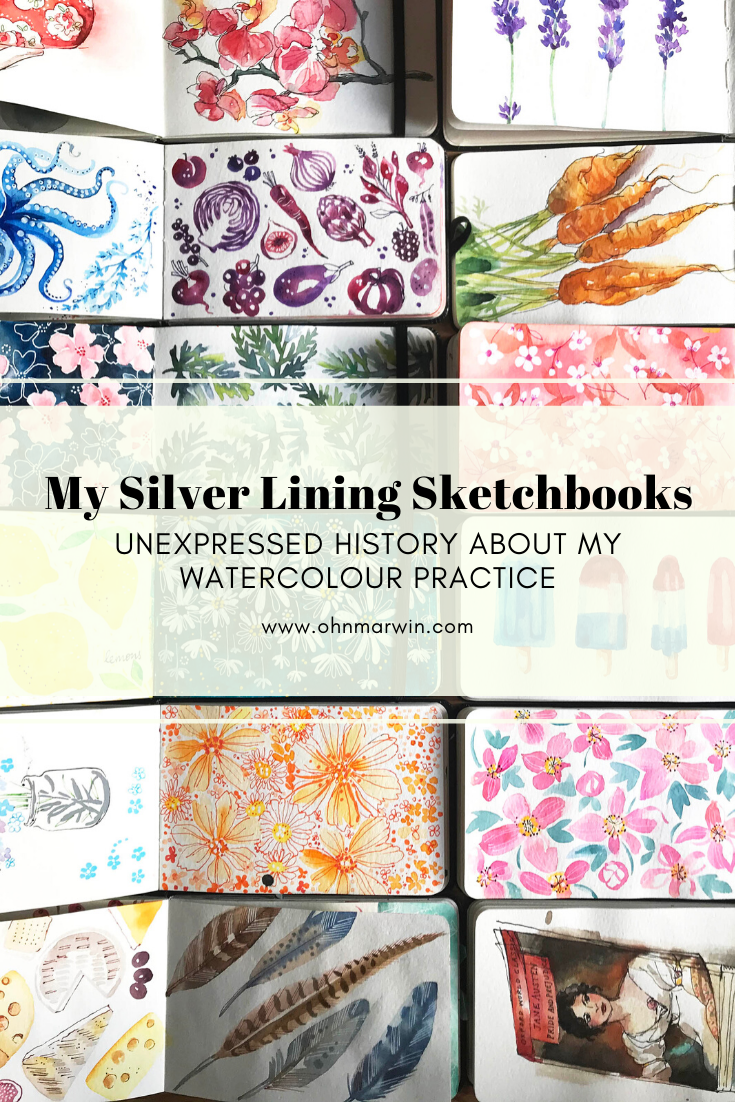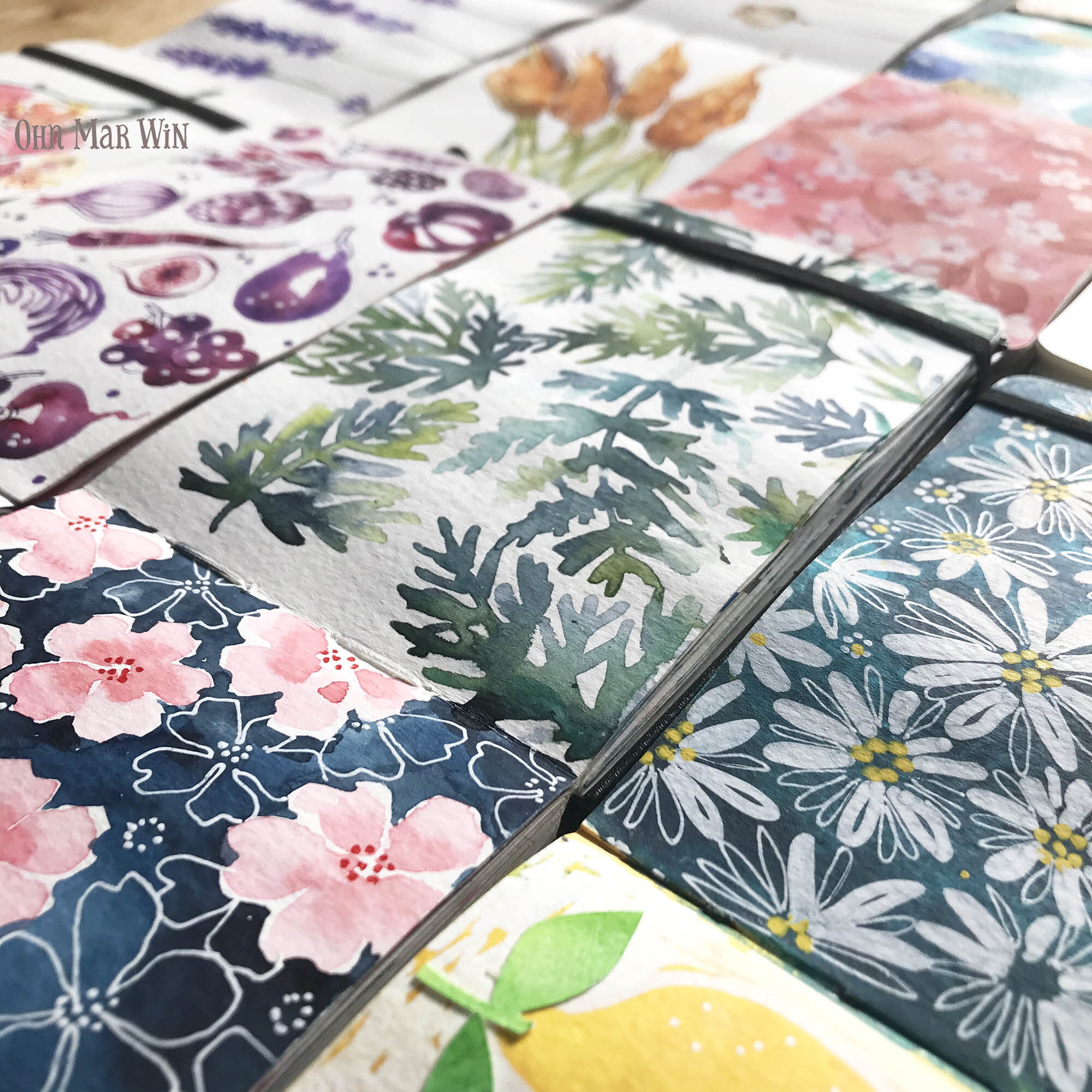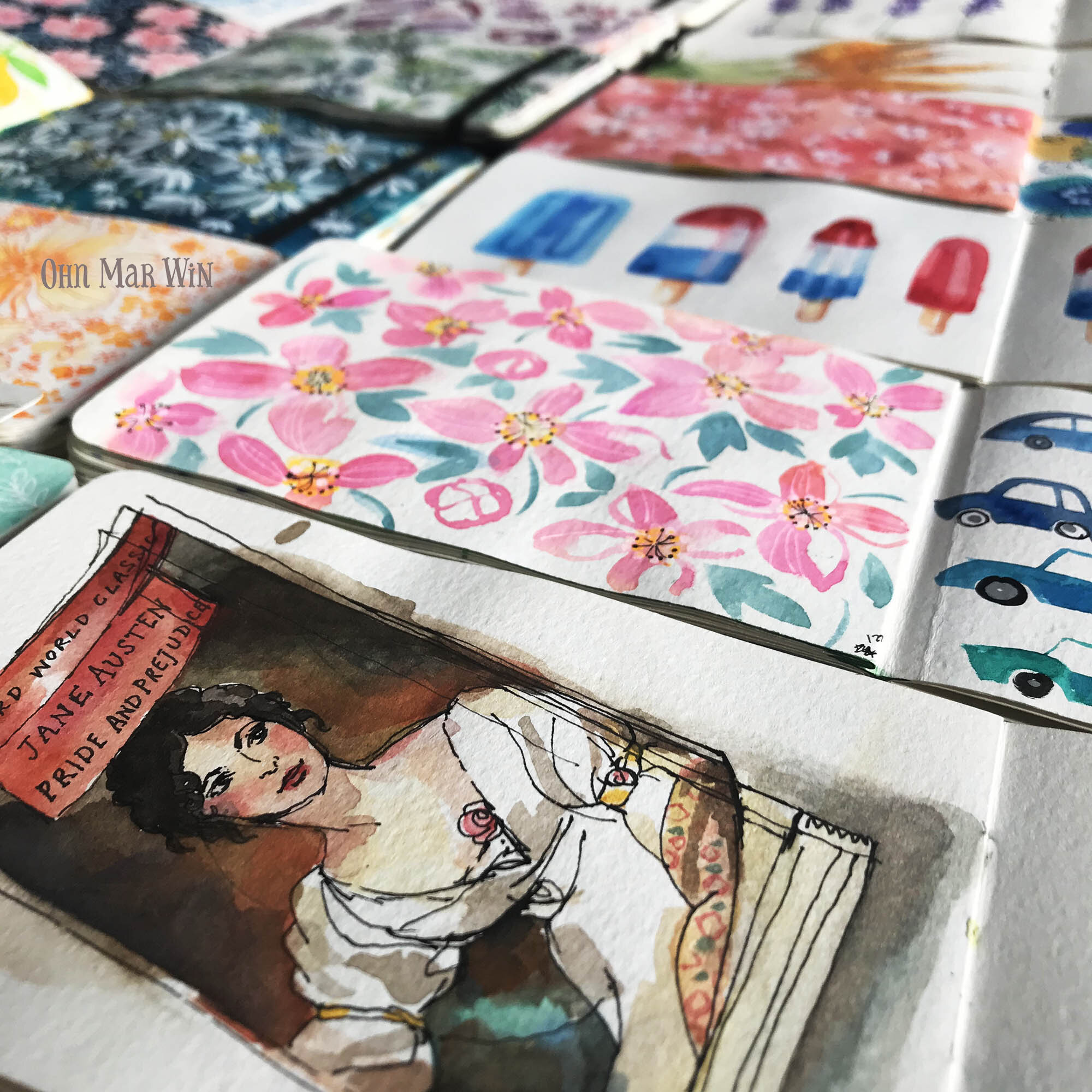Over the past decade, my creative journey has taken me from illustration to teaching, and my brand has evolved in ways I never anticipated. When I first created my website 10 years ago after an 8-year break to raise my children, I had no grand plan. I used Squarespace’s free platform, uploaded a handful of images I’d made during an online course, and hand-lettered a logo in about an hour. It was simple, functional, and very much focused on my work as an illustrator.
At the time, I didn’t think much about branding. My website was essentially a portfolio of my food illustrations, which dominated my business early in my career. I handled everything myself, linking images to Pinterest and tweaking things as needed. There was no overarching strategy—just a place to showcase my work.
But by 2018, everything began to shift. I had started creating online classes as a way to supplement my income, and unexpectedly, teaching became a major part of my business. With over 30 classes on Skillshare, covering everything from watercolour techniques to social media tips, I found myself in the role of an educator. However, my website was still built around illustration, and I struggled to feature my growing list of classes in a way that reflected their importance in my creative business.
The Need for a New Approach
In the years that followed, I tried to adjust my site to reflect the changes, especially as I launched new projects like my book ‘Go With The Flow Painting’ and expanded into hosting in-person workshops and art retreats. But it became clear that my website wasn’t fully aligned with where I was headed—it no longer reflected the full scope of my brand.
I knew I needed help. Enter Faye Brown, a fellow Skillshare teacher and branding expert whom I’d met at various teacher meetups. Faye understood how my business had evolved and how teaching had become such a key part of my income streams. We arranged a call to discuss my needs, and her detailed proposal made me realise just how much thought needed to go into building a brand that reflected both my art and teaching.
Defining My Brand
Faye’s process was thorough yet creative. She sent me a brand consultation with exercises designed to uncover my brand personality. I found myself answering thought-provoking questions like, “If your business were a city, drink, or animal, what would it be and why?” The goal was to get to the heart of what my brand stood for and how I wanted people to feel when they encountered my work.
Through this process, words like ‘inventive’, ‘diligent’, and ‘capable’ came up. My brand values emerged as: personal growth, self-expression, and creating an inclusive and collaborative learning environment. I wanted my clients—whether they were students or art lovers—to feel empowered, heard, and inspired.
The Creative Transformation
With my brand identity defined, Faye moved on to designing a new logo. She had the ingenious idea of using a paintbrush in the logo to reflect my work in watercolour, but it wasn’t quite right at first. Fortunately, I was co-hosting an in person workshop near her home, and Faye was able to see the quill brushes I often use. She took reference photos, and from there, the perfect logo was born—one that felt authentically me and symbolised the artist and educator I had become.
Faye also developed a colour palette that captured my brand’s personality, and the timing couldn’t have been better. I was about to head to France with my photographer, Nat Aubry, for a workshop where we’d shoot photos for my new website. Everything fell into place beautifully.
A Brand That Reflects My Evolution
The final result is a new website and brand that truly represents where I am today as both an artist and educator. It’s allowed me to feature my online courses, in-person workshops, and art retreats in a way that feels cohesive and aligned with my creative journey. My new logo and branding have already made their way onto my Illustrators for Hire profile and my Teachable site, giving me a unified, professional look across platforms.
This evolution wasn’t just about aesthetics—it was about embracing the multi-faceted nature of my business and presenting it in a way that resonates with both students and art lovers alike. I couldn’t be more excited to see where this new chapter takes me.






